Why and How Does Incomplete Combustion of Propane Release Carbon Monoxide?
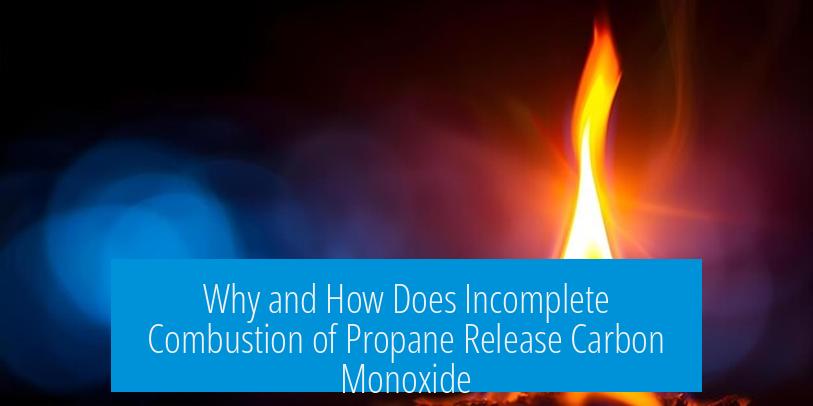
Incomplete combustion of propane releases carbon monoxide because of insufficient oxygen supply, preventing full oxidation of carbon atoms into carbon dioxide. Instead, carbon monoxide and soot form, alongside some water vapor. This happens when oxygen is limited, so propane cannot fully convert to carbon dioxide (CO2).
Cause of Carbon Monoxide in Incomplete Combustion
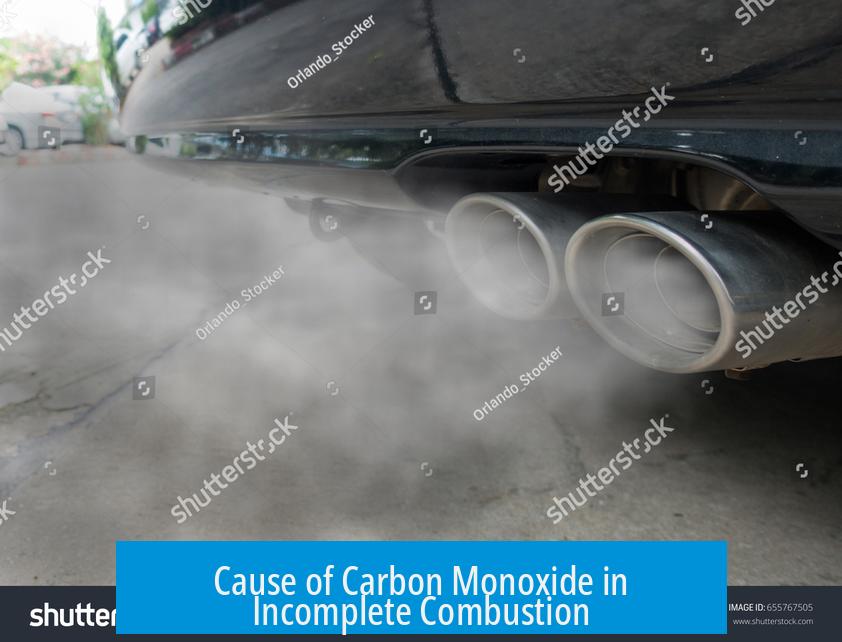
Insufficient Oxygen Supply
Propane combustion requires oxygen molecules to oxidize carbon atoms fully. The ideal reaction needs two oxygen atoms per carbon atom to form CO2. When oxygen is scarce, carbon atoms only partially oxidize, creating carbon monoxide (CO), which contains just one oxygen atom per carbon atom.
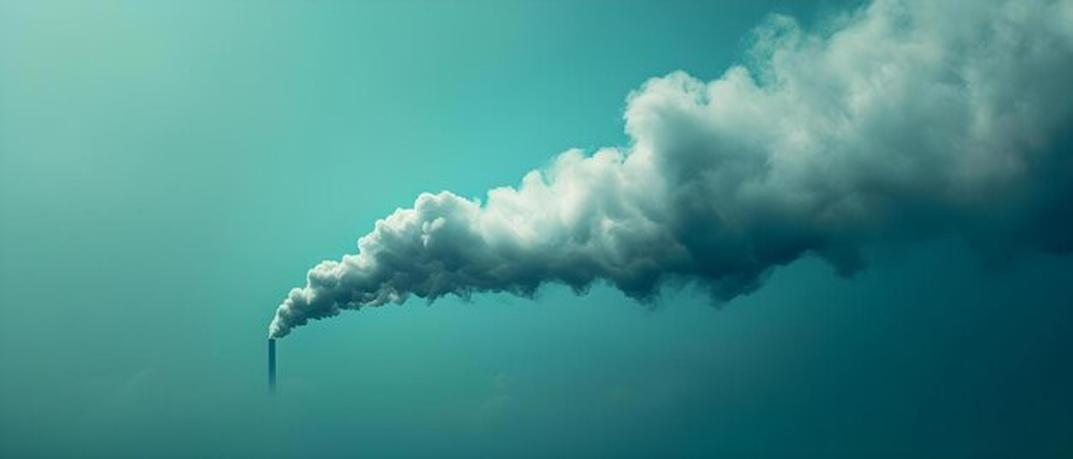
- Limited oxygen creates CO rather than CO2.
- Pure carbon or soot also forms due to incomplete combustion.
- Incomplete combustion produces additional soot and water vapor.
Oxygen-to-Carbon Ratio in Combustion
The combustion balance hinges on oxygen availability. Propane (C3H8) burning with enough oxygen yields CO2 and water. Reduced oxygen supplies shift the reaction, producing CO with lower oxygen content per carbon.
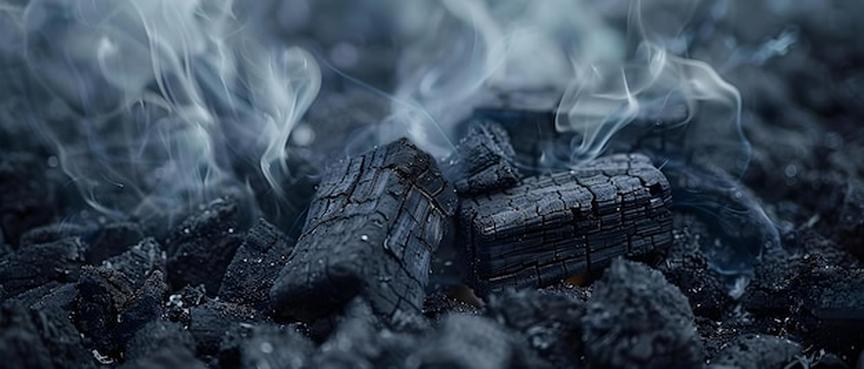
Nature of Incomplete Combustion
Definition and Characteristics
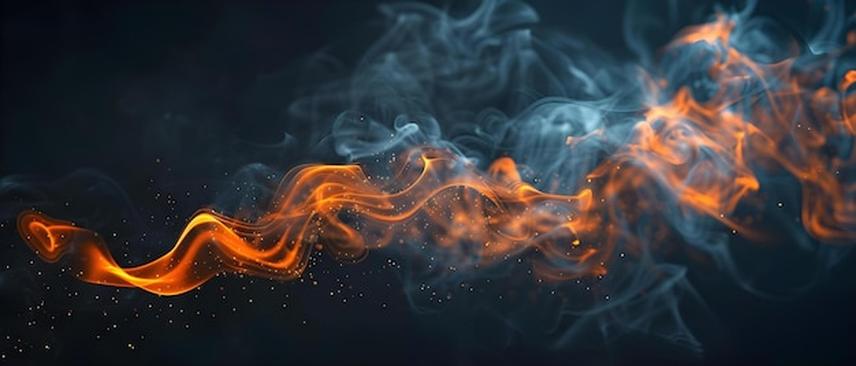
Incomplete combustion means carbon atoms do not achieve maximum oxidation. The carbon is left in lower oxidation states such as CO and soot, reflecting less energy release and more hazardous products.
Reduction of CO2 to CO in Flames

Some formed CO2 reacts further in the flame’s reducing section. This reaction reduces CO2 back to CO. A similar reaction occurs during charcoal burning:
C (charcoal) + O2 → CO2 CO2 + C → 2 CO
This cycling increases CO production under reducing conditions.
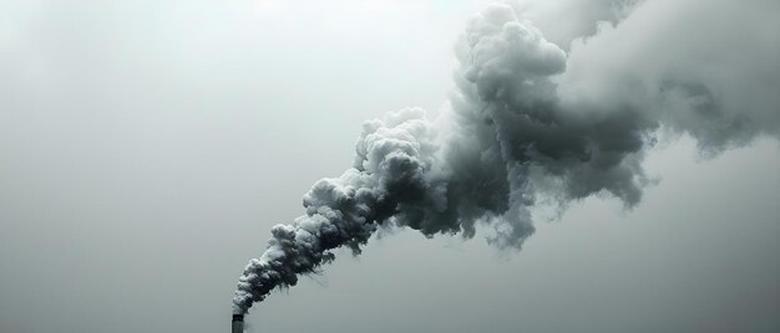
Misconception About Carbon Monoxide Origin
CO Not Originally Present in Propane
Carbon monoxide is not pre-existing in propane fuel. It forms exclusively during incomplete combustion. The propane itself contains only carbon and hydrogen atoms, not CO.
Additional Safety Advice
Carbon monoxide is a toxic, odorless gas often generated by incomplete propane combustion. Avoid indoor use of propane-fueled grills or heaters to prevent CO buildup and poisoning risks.
Key Takeaways
- Incomplete combustion results from low oxygen, leading to CO, soot, and water vapor.
- Propane combustion needs sufficient oxygen to fully oxidize carbon atoms to CO2.
- CO can form via CO2 reduction in the flame’s reducing zone.
- CO is not initially present in propane, but forms during combustion.
- Proper ventilation is essential to prevent CO poisoning from propane use.
Why and How Does Incomplete Combustion of Propane Release Carbon Monoxide?
Let’s cut to the chase: incomplete combustion of propane produces carbon monoxide (CO) because the propane doesn’t burn fully due to insufficient oxygen. The carbon atoms don’t get fully oxidized into carbon dioxide (CO2). Instead, they partially oxidize into carbon monoxide, a sneaky and deadly gas. Now, let’s break down why and how this happens.
Imagine firing up your backyard propane grill indoors—don’t! That’s a perfect recipe for incomplete combustion and carbon monoxide buildup. It happens more often than you’d think, and it’s far from harmless.
Oxygen: The Star of Combustion
Combustion is a chemical romance between propane and oxygen. When they meet in the right proportions, propane (C3H8) reacts with oxygen (O2) to form carbon dioxide and water vapor, releasing energy. But the plot twists if oxygen is short on supply.
The key fact: each carbon atom in propane needs two oxygen atoms to become fully oxidized into CO2. If all carbons pair with two oxygens, you get clean burning.
But what if oxygen plays hard to get? When oxygen is limited, each carbon atom might only find one oxygen atom to bond with. This leads to carbon monoxide (CO) instead of CO2 and sometimes pure carbon particles (soot). Think of it as a half-finished chemical handshake.
- Propane + limited oxygen → Carbon monoxide + soot + some water vapor.
- With enough oxygen → Carbon dioxide + water vapor.
Simply put, it’s a matter of oxygen-to-carbon ratios dictating whether combustion is complete or incomplete.
What Exactly Is Incomplete Combustion?
When combustion isn’t complete, we don’t get the fully oxidized products we want—namely, CO2 and water. Instead, the products sit somewhere halfway along the oxidation ladder.
While the chemistry is a bit more complex, picture incomplete combustion as a situation where propane’s carbon doesn’t get the full oxygen treatment. Instead of two oxygen atoms per carbon, you get fewer, producing carbon monoxide (CO), a dangerous gas with one oxygen atom per carbon.
Carbon monoxide is colorless and odorless, making it a silent killer. No surprise that CO alarms are crucial safety devices at home.
Flame Dynamics: Carbon Dioxide Can Revert to Carbon Monoxide
Here’s a twist not everyone knows about: even if CO2 initially forms, it can get reduced back to CO within the flame’s reducing zone. The flame doesn’t stay uniform—there’s a hot, oxygen-rich zone and a cooler, oxygen-poor zone.
Think of the flame as a tiny chemical battleground where CO2 and leftover carbon can interact:
C (charcoal) + O2 → CO2
CO2 + C → 2 CO
This reaction shows how carbon dioxide can get converted back into carbon monoxide when carbon is still present and oxygen is scarce.
Why does this matter? Because even flames that appear to be burning clean might harbor hidden pockets producing CO.
Common Misconception: Carbon Monoxide Isn’t Pre-Mixed in Propane
Some folks wonder if carbon monoxide somehow starts off mixed in with the propane fuel. The answer is no.
Propane tanks contain mostly pure propane. CO forms during the combustion process, specifically when oxygen supply is insufficient. So don’t worry about mysterious CO lurking inside your propane; the problem starts once combustion kicks in.
Real World Example: Grilling Indoors—A Recipe for CO Poisoning
Here’s a practical tip: never grill indoors or in enclosed spaces. Propane grills consume oxygen quickly and can cause incomplete combustion, producing dangerous CO levels. It’s the #1 safety advice to avoid potential carbon monoxide poisoning.
Installing CO detectors is essential if you use propane appliances inside your home. They save lives by alerting you when the invisible gas creeps up.
Why Does Any of This Matter?
Carbon monoxide is highly toxic. It binds with hemoglobin in your blood more effectively than oxygen, blocking your body’s oxygen delivery. Symptoms can start mild, like headaches or dizziness, but severe exposure results in unconsciousness or death.
Knowing why incomplete combustion occurs helps you prevent CO buildup. Ensuring proper ventilation and ample oxygen supply during propane combustion is the key.
How to Avoid Incomplete Combustion of Propane and CO Release
- Ensure appliances are well-maintained and burner ports are clean.
- Allow fresh air circulation—avoid sealed rooms.
- Check propane regulators to maintain correct pressure.
- Use appliances designed for indoor use inside.
- Install carbon monoxide detectors near sleeping areas.
Pro tip: if you notice yellow or orange flames on propane burners (instead of blue), it likely signals incomplete combustion and CO production.
To Sum Up the Science and Safety
Incomplete combustion of propane releases carbon monoxide because there isn’t enough oxygen to fully convert propane’s carbon into carbon dioxide. Instead, partial oxidation forms carbon monoxide and soot, which are dangerous and indicate poor combustion efficiency.
CO forms only during combustion, not from the original fuel. Even flames that look normal can produce CO in the reducing parts of flames where oxygen is limited.
Knowing how oxygen supply controls combustion quality lets you recognize risk signs and maintain safety. After all, no chef wants to end their cookout with a surprise toxic guest in the kitchen!
So remember: keep your flames blue, your ventilation open, and your CO alarms working.
Why does incomplete combustion of propane produce carbon monoxide instead of carbon dioxide?
Incomplete combustion occurs when there isn’t enough oxygen to fully oxidize the carbon in propane. This leads to carbon atoms combining with only one oxygen atom, forming carbon monoxide (CO), not carbon dioxide (CO₂).
How does the oxygen-to-carbon ratio affect the formation of carbon monoxide during propane burning?
For complete combustion, two oxygen atoms are needed per carbon atom in propane. When oxygen supply is limited, only one oxygen atom bonds with each carbon, creating carbon monoxide rather than carbon dioxide.
What role does carbon dioxide reduction play in producing carbon monoxide in flames?
Some carbon dioxide formed initially circulates back into hotter regions of the flame where it reacts with carbon to form carbon monoxide. This recycling reduces CO₂ to CO during combustion.
Is carbon monoxide present in propane fuel before combustion?
No, carbon monoxide isn’t originally present in propane. It forms only during combustion when oxygen is insufficient, causing partial oxidation of carbon atoms in propane molecules.
Why is incomplete combustion called “incomplete” in the context of propane burning?
It’s called incomplete because the carbon atoms don’t reach their fully oxidized state as CO₂. Instead, they form partially oxidized products like CO and soot due to lack of oxygen.


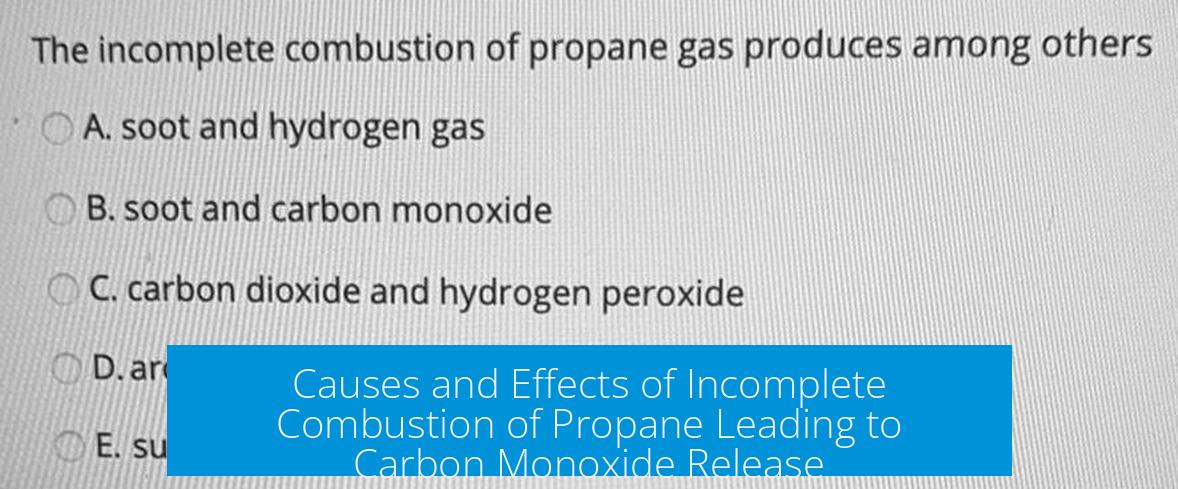

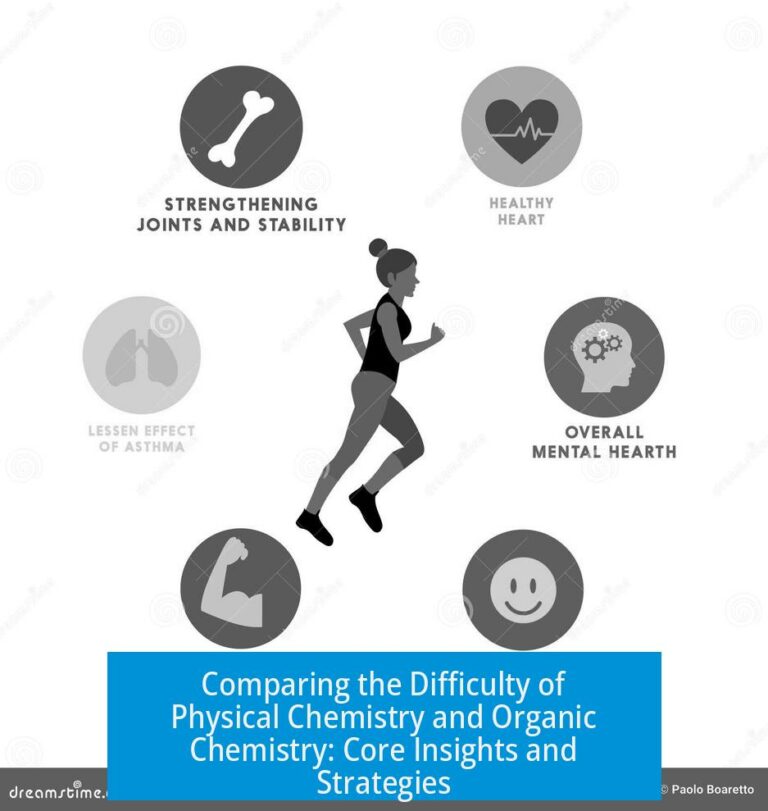
Leave a Comment